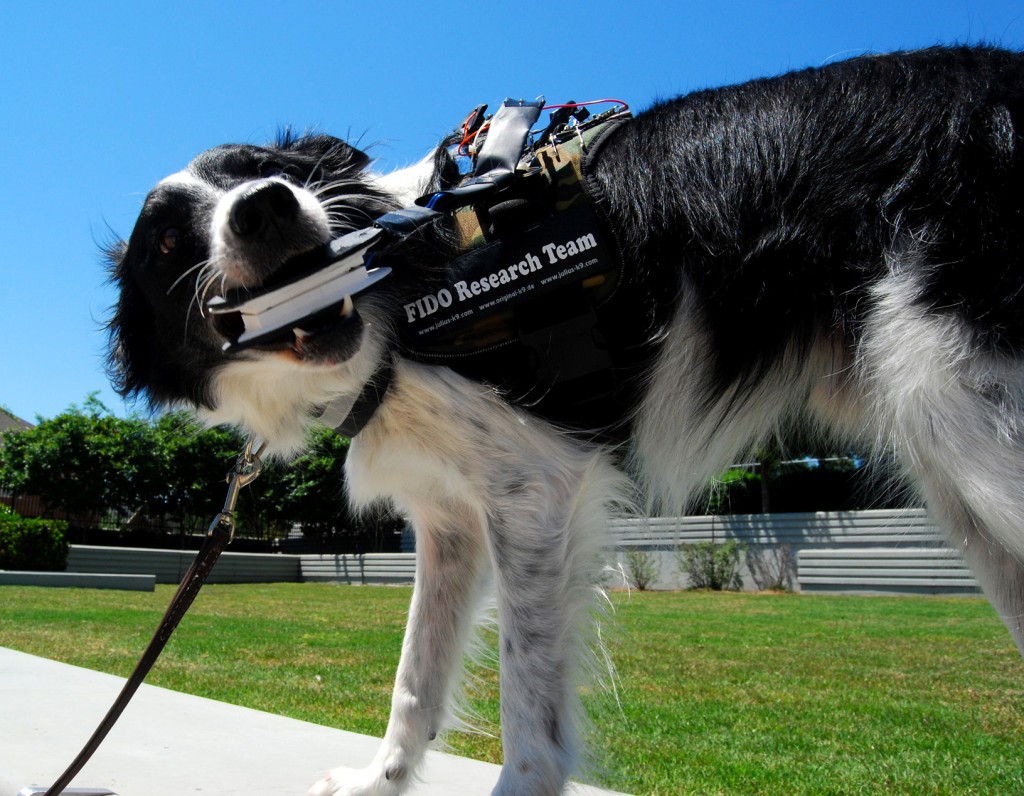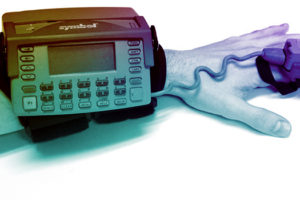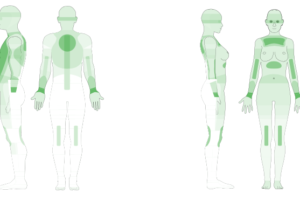Working dogs have improved the lives of thousands of people. However, communication between human and canine partners is currently limited. The main goal of the FIDO project is to research fundamental aspects of wearable technologies to support communication between working dogs and their handlers. The FIDO team investigated on-body interfaces for assistance dogs in the form of wearable technology integrated into assistance dog vests. We created four different sensors that dogs could activate (based on biting, tugging, and nose gestures) and tested them on-body with three assistance-trained dogs. We were able to demonstrate that it is possible to create wearable sensors that dogs can reliably activate on command. Wearable technology for dogs may help in situations such as….
Melissa and her guide dog Roman are walking along a familiar sidewalk when Roman suddenly stops. Melissa asks him to go on, but Roman refuses. Melissa checks for obstructions with her collapsible cane and feels nothing in their path. “What is it, Roman?” Roman tugs a tab on his harness and the message “go around” sounds in Melissa’s earbuds. Roman finds a safe route off of the sidewalk, avoiding the wet cement in their path.
Charles is engrossed in a movie in his dark home theater when his hearing dog, Schubert, alerts. “What is it, Schubert, the doorbell?” Charles asks, and Schubert touches one of the four buttons on his vest with his nose. A message appears on Charles’ head-mounted display. “Tornado siren? Oh my!” As they immediately head to the basement, Charles praises Schubert for the warning.
Police sergeant Sarah Gray knows that time is of the essence as she gives a hand signal to her Search and Rescue dog, Stryker. As Stryker begins a sweep of the woods off to his right, he picks up a familiar scent and follows it, running faster as it gets stronger. In a small hollow he locates his target: the 6-year-old child who wandered away from her family’s campsite. He grabs a rectangular object dangling from his collar and begins to bite it. The object activates a GPS communicator on his vest, geo-locating and transmitting his position to his handler and a medical team standing by. A tone tells Stryker that his work is done, and he lies down waiting for his handler and her team to arrive.
The scenarios above are just a sampling of the many ways dogs could use wearable electronics to communicate with humans. Dogs currently work in many ways: guide dogs serve people with visual impairments [2]; service dogs aid people with physical disabilities [1]; hearing dogs alert people with auditory disabilities to sounds; Search and Rescue (SAR) dogs can locate people who are lost. These highly trained canines perform critical, even life-saving tasks. These scenarios were taken from articles and papers written by members of the FIDO Team headed by Melody Moore Jackson.
Read more about FIDO in the MIT Tech Review, also look for our first academic paper on FIDO in the proceedings of this years IEEE International Symposium on Wearable Computers.
The FIDO Research Team includes:
Melody Jackson, Thad Starner, Clint Zeagler, and Giancarlo Valentin
- Canine Companions for Independence. www.cci.org
- The Seeing Eye. http://www.seeingeye.org/




